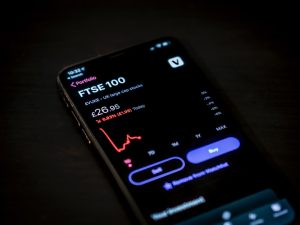Forex trading, also known as foreign exchange trading, involves the buying and selling of currencies. The goal of forex trading is to make a profit by buying a currency at a low price and selling it at a higher price. The process of placing an order in forex trading can be overwhelming for beginners. In this article, we will explain how to place an order in forex trading.
Step 1: Understand the Types of Orders
Before placing an order in forex trading, it is essential to know the different types of orders. There are four types of orders in forex trading:
1. Market Order: A market order is an order to buy or sell a currency at the current market price. These orders are executed immediately.
2. Limit Order: A limit order is an order to buy or sell a currency at a specific price. These orders are executed only if the market reaches the specified price.
3. Stop Order: A stop order is an order to buy or sell a currency when the price reaches a specific level. These orders are used to limit losses or lock-in profits.
4. Trailing Stop Order: A trailing stop order is an order to buy or sell a currency at a specific level, but the order price moves with the market price. These orders are used to lock-in profits while allowing for upside potential.
Step 2: Choose a Currency Pair
The next step is to choose a currency pair. Forex trading involves buying and selling currency pairs. Currency pairs are two currencies that are paired together, such as EUR/USD, GBP/USD, and USD/JPY. It is essential to understand the currency pair you intend to trade and its history.
Step 3: Determine the Size of the Trade
After choosing your currency pair, you need to determine the size of the trade. The size of the trade refers to the amount of currency you want to buy or sell. Forex trading is usually done in lots. A standard lot is 100,000 units of currency, a mini lot is 10,000 units of currency, and a micro lot is 1,000 units of currency. The size of your trade will depend on your account balance and risk tolerance.
Step 4: Choose the Type of Order
Once you have determined the size of the trade, it is time to choose the type of order you want to place. You can choose a market order, limit order, stop order, or trailing stop order.
Step 5: Set Your Stop Loss and Take Profit Levels
Setting your stop loss and take profit levels is essential in forex trading. A stop-loss order is an order to sell a currency when it reaches a specific price level, which limits your losses. A take-profit order is an order to sell a currency when it reaches a specific price level, which locks in your profits. It is essential to set your stop loss and take profit levels before placing your order.
Step 6: Place Your Order
After choosing the type of order and setting your stop loss and take profit levels, it is time to place your order. Most forex trading platforms have a simple interface for placing orders. You will need to enter the currency pair, the size of the trade, the type of order, and the stop loss and take profit levels. Once you have entered this information, you can click on the “submit” button to place your order.
Step 7: Monitor Your Trade
After placing your order, you need to monitor your trade. Forex trading is a dynamic market, and prices can fluctuate quickly. You need to keep an eye on the market and adjust your stop-loss and take-profit levels accordingly.
Conclusion
Forex trading can be a profitable venture, but it requires knowledge and experience. Placing an order in forex trading involves understanding the different types of orders, choosing a currency pair, determining the size of the trade, choosing the type of order, setting your stop loss and take profit levels, and placing your order. It is essential to monitor your trade and adjust your stop loss and take profit levels accordingly. With practice and experience, you can become a successful forex trader.





